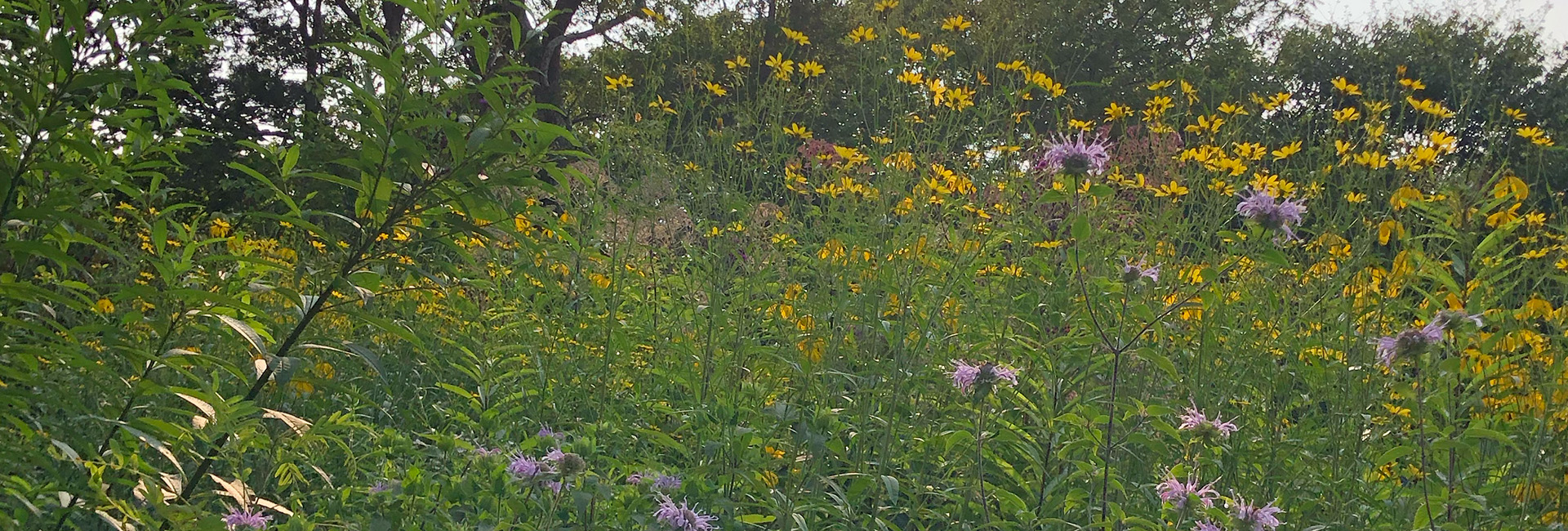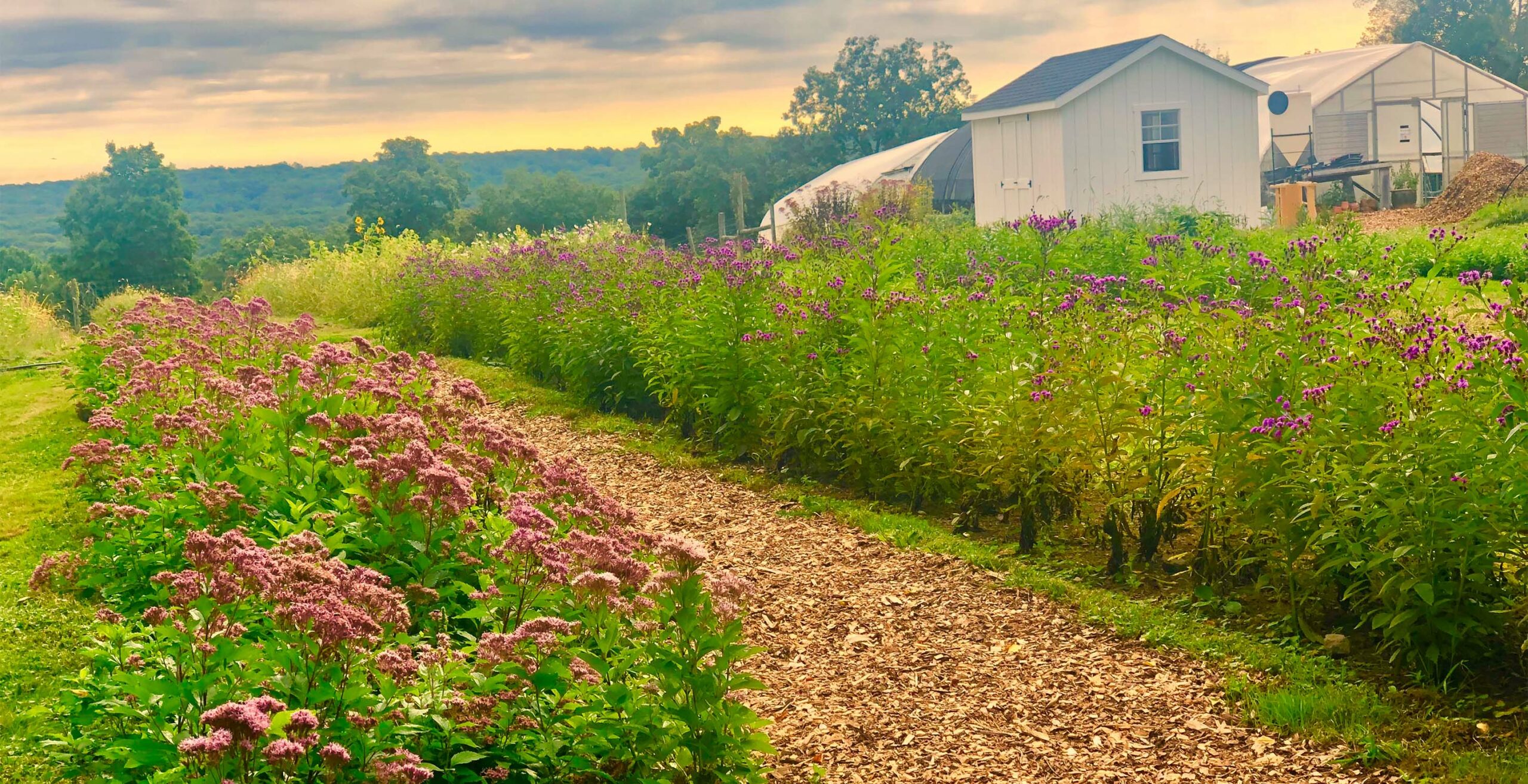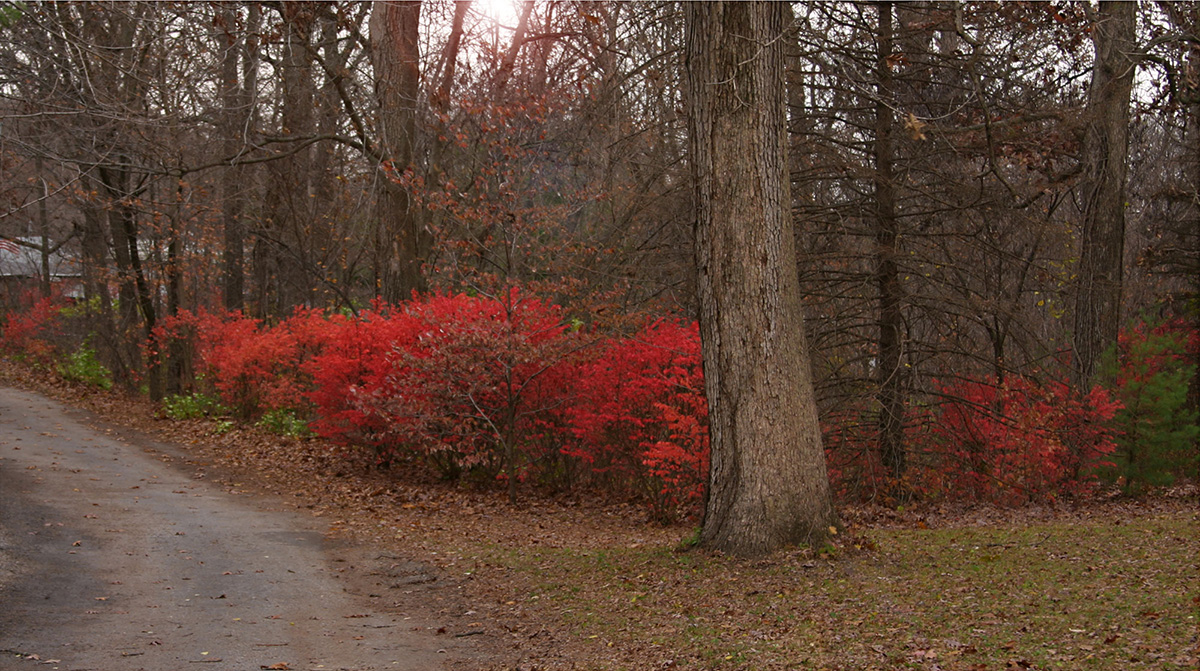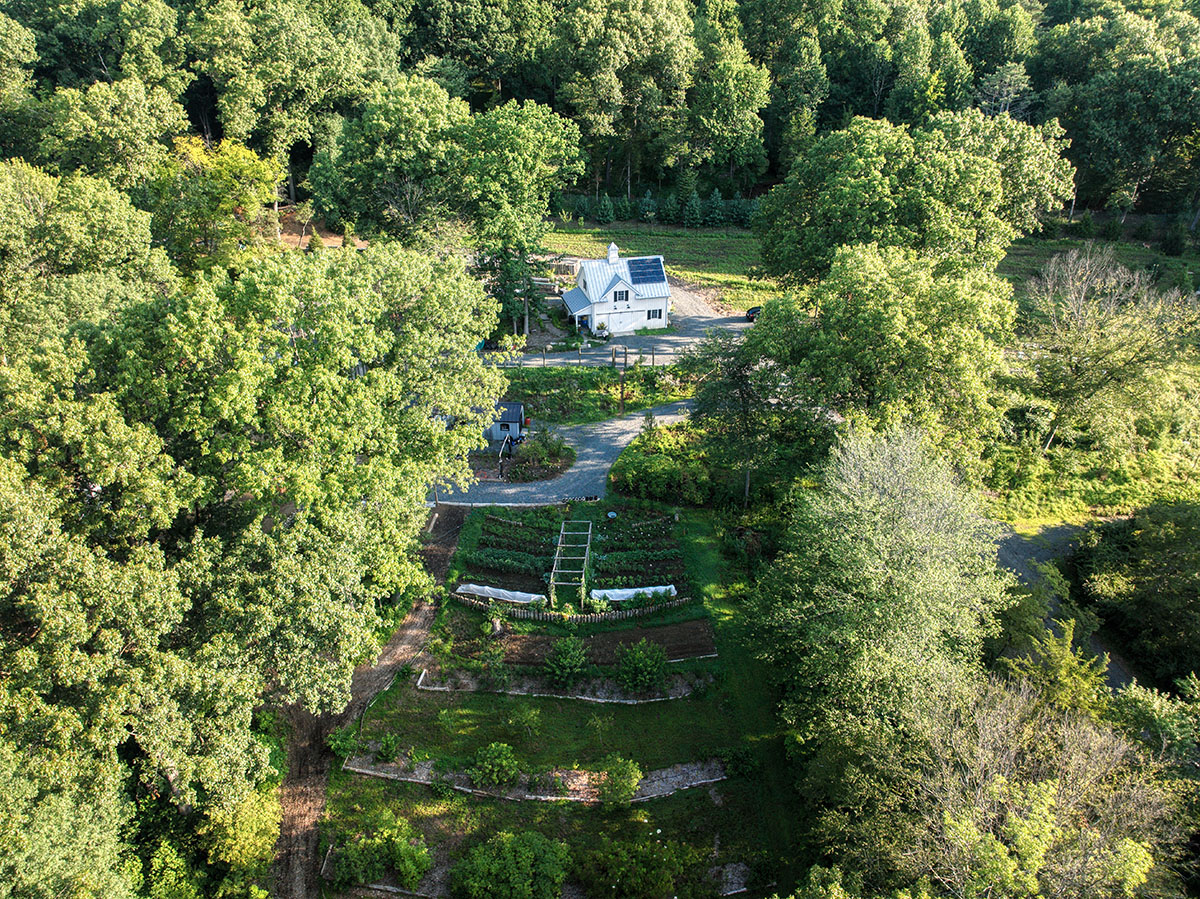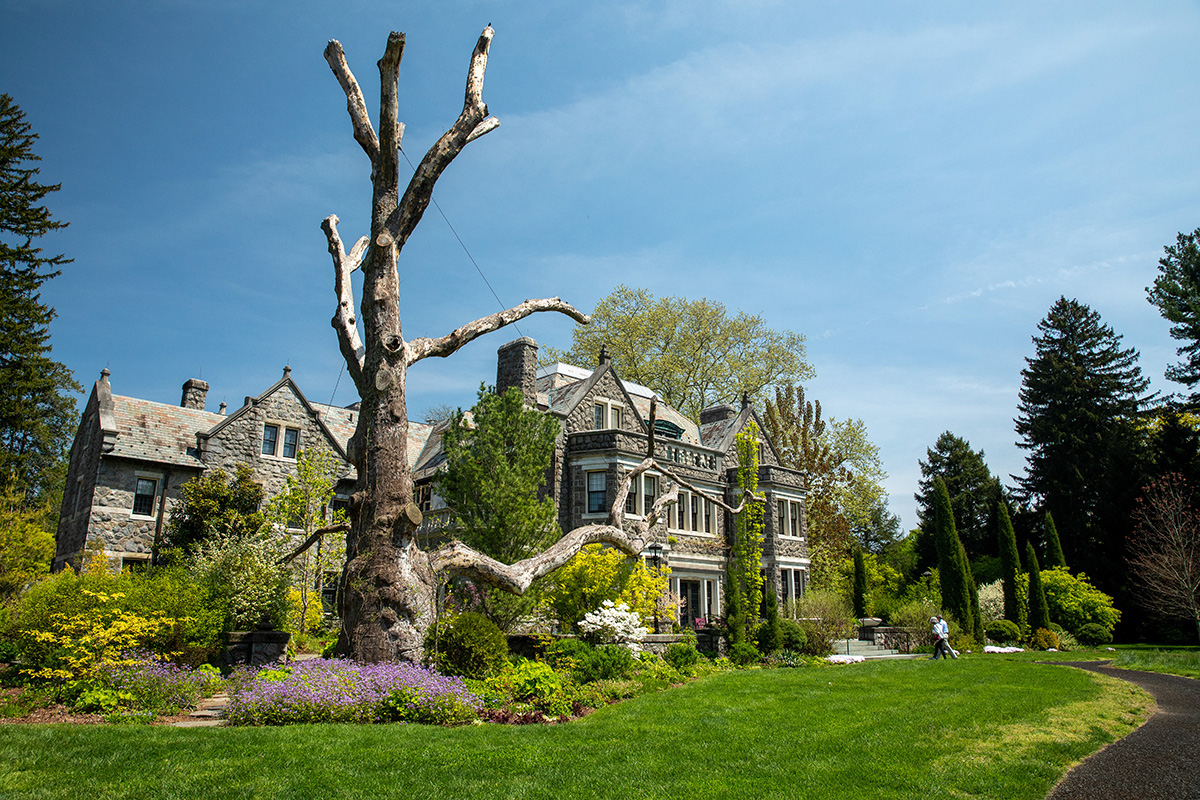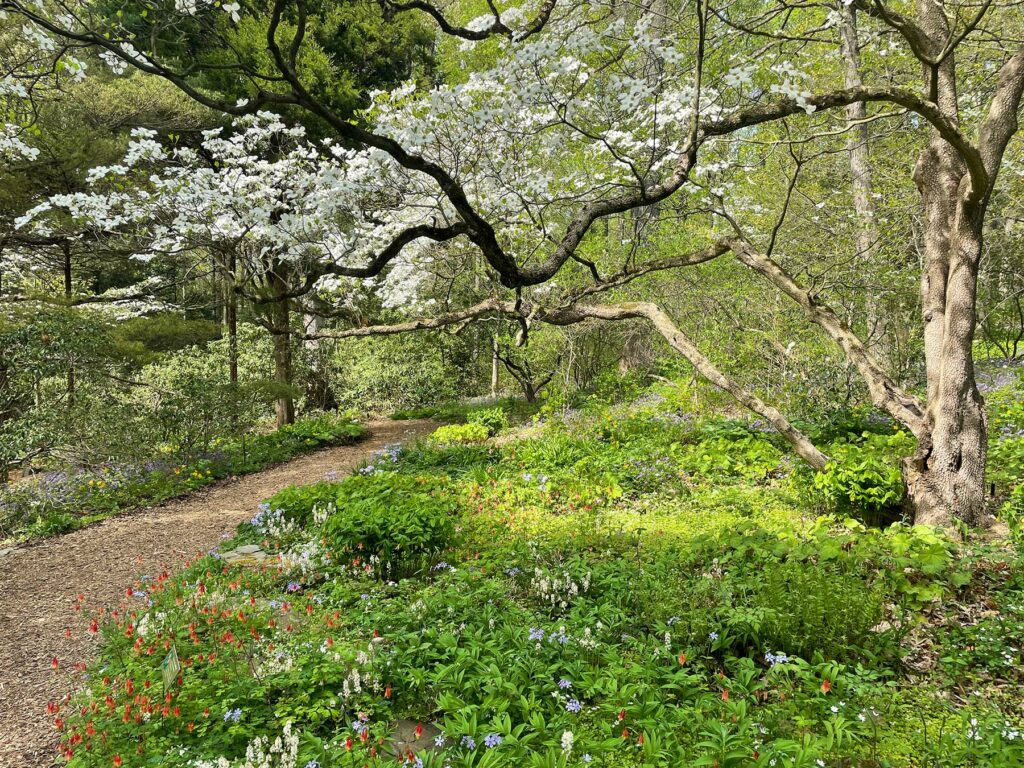
In our post last week, we heard from a group of horticulturists and garden designers where they go to source native plants and seeds. Now we’ve asked these gardening superstars (plus a few more) to share their favorite native plant combinations. We’ve all heard why native plants are vital to supporting our ecosystem. Studies have shown that if we our yards have 70%—or about two-thirds—native plants, we’ll provide enough habitat for healthy populations of birds, bees, butterflies, and other pollinators. As we like to say here at Perfect Earth, “Native plants need so little, and they give so much.” Why don’t you give them a try?
Below, the experts recommend their favorite native planting combinations.
Uli Lorimer, Director of Horticulture at Native Plant Trust, Massachusetts
“The real question should be what is my current plant combination crush? One of my absolute favorite combinations at Garden in the Woods is stinking Benjamin or wake Robin (Trillium erectum) with squirrel corn (Dicentra canadensis). Both are fleeting in their beauty, which causes me to appreciate them even more.”
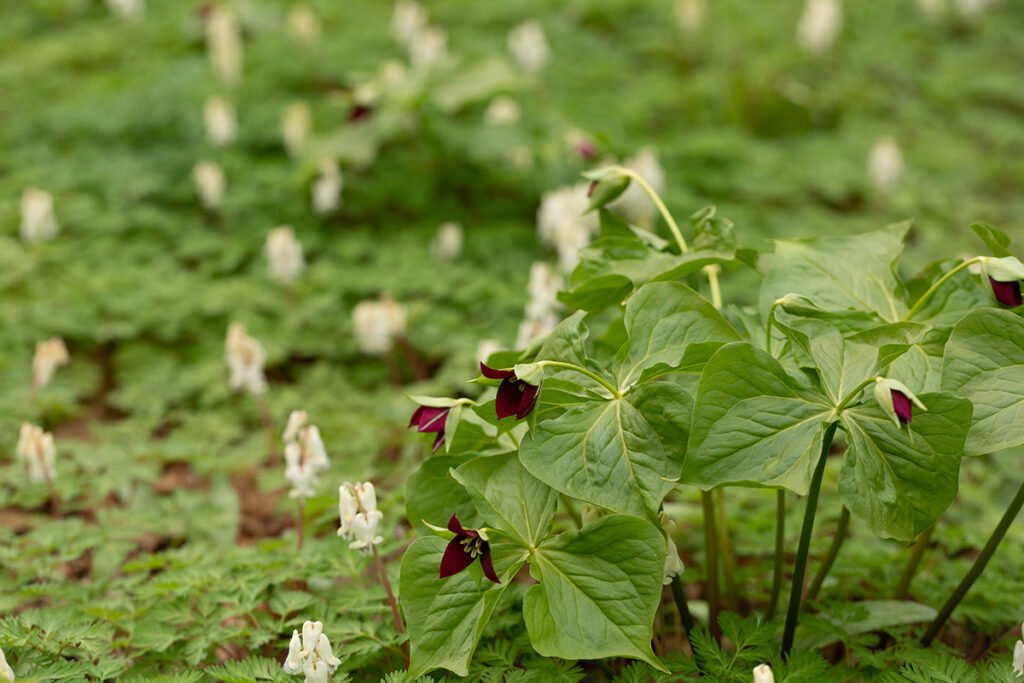
“Squirrel corn (Dicentra canadensis), a bleeding heart relative, produces small yellow corms which resemble corn kernels, yet despite their small size produce lovely masses of fringed gray blue foliage topped with gorgeous small white flowers. The more robust stinking Benjamin (Trillium erectum)pushes through the abundance of leaves with its characteristic three leaves and striking deep maroon flowers,” says Lorimer. Photo by Uli Lorimer, copyright Native Plant Trust.
“I love this combination in the garden for several reasons. First, this took a long time to come together. In our fast-paced world, nature still has a lot to teach us about being patient, about delayed gratification. This scene took decades to develop, just that fact alone fills me with a sense of awe and gratitude. The second reason has to do with the relationships these plants have with insects. Trillium is pollinated by fungus gnats and flies, on account of its malodorous (to our noses) fragrance and flesh-colored blooms. Even better is when ants come along and help disperse the seeds of both species, each seed containing a fatty ant reward called an elaiosome. Lastly, who can deny their beauty? Seeing this scene says Eastern Deciduous Forest of the United States to me, it grounds me to the place that I call home.”
Abby Lawless, Principal of Farm Landscape Design, Long Island, NY
“I love to combine little bluestem grass (Schizachyrium scoparium), prairie dropseed grass (Sporobolus heterolepis), switchgrass (Panicum virgatu), hyssops (Agastaches), Culver’s root (Veronicastrum virginicum), Virginia mountain mint (Pycnanthemum virginianum), spotted bee balm (Monarda punctata), pale purple coneflower (Echinacea pallida), sweet Joe Pye weed (Eupatorium purpureum), swamp milkweed (Asclepias incarnata spp. pulchera).
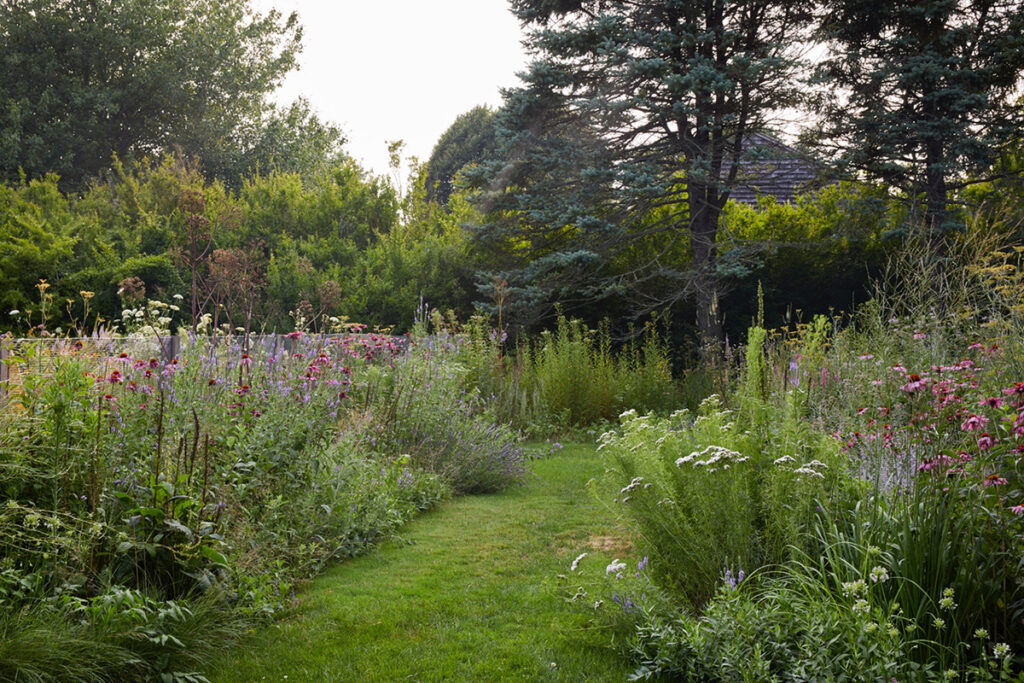
“The positive ecological impact of these plants cannot be overstated. When they are in bloom they provide nectar and pollen for insects from spring through fall, and the foliage of Asclepias provides food for monarch butterfly caterpillars. After flowering, the seeds provide nutrient-dense forage for birds and other wildlife. American Goldfinches especially love echinacea seeds. Stems and foliage can provide nesting material for wildlife, and some insects even over-winter inside the stems. These are all good reasons not to cut back your native plants in the fall.”
Jeff Lorenz, Founder of Refugia Design, Pennsylvania:
“My current favorite combination is white blooming pearly everlasting, side oats gama grass (Bouteloua gracilis), purple love grass, and burgundy ‘Red Midget’ upright prairie coneflower (Ratibida columnifera ‘Red Midget’). These are all functional and resilient native perennials. Tough as nails, drought tolerant, long bloom times, understated, textural, and gorgeous.”
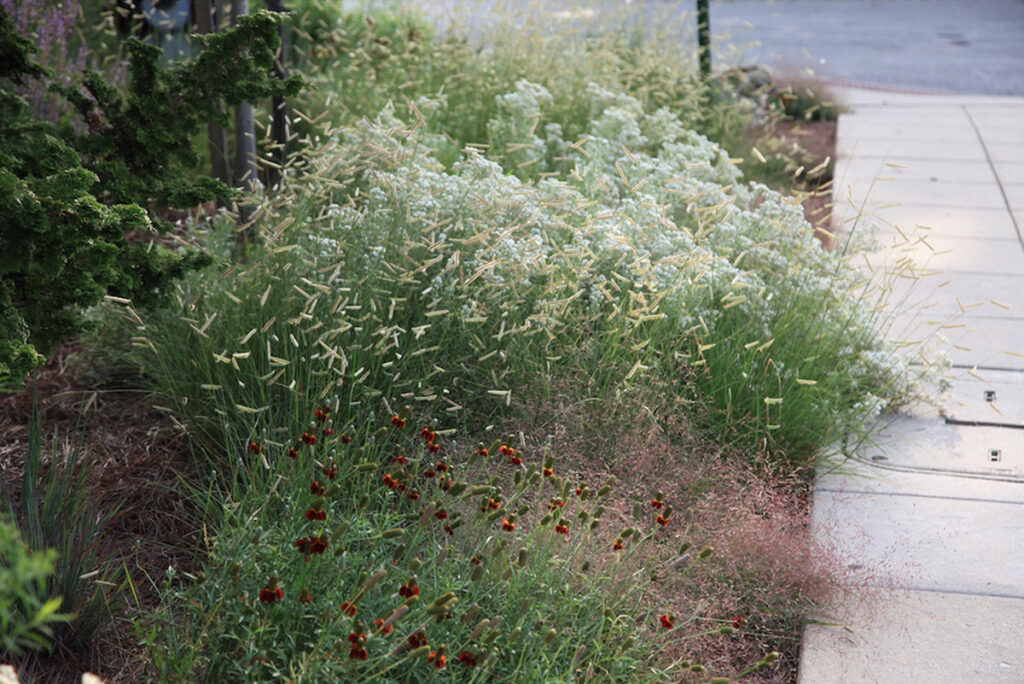
A detail of Lorenz’s current favorite plant combination. This planting, which is outside of Boyd’s Philadelphia department store, provides habitat, reduces noise and pollution since it doesn’t require mowing or fertilizer, and helps manage stormwater. It is proof that native plants can grow anywhere—cities, suburbs, country—and look beautiful. Photo courtesy of Refugia Design.
Grace Fuller Marroquin, Founder and Creative Director of Grace Fuller Design, New York:
“I love to combine foxglove beardtongue (Penstemon digitalis) and native grasses, like switch grass (Panicum virgatum) and prairie dropseed (Sporobolus heterolepis). They’re beautiful, romantic, and are great for pollinators. Plus, they’re drought-resistant and require minimum water to get them started.”
Hummingbirds and bumblebees love foxglove beardtongue (Penstemon digitalis). Bonus: they grow well in clay soils with poor drainage. Photo courtesy of Prairie Moon.
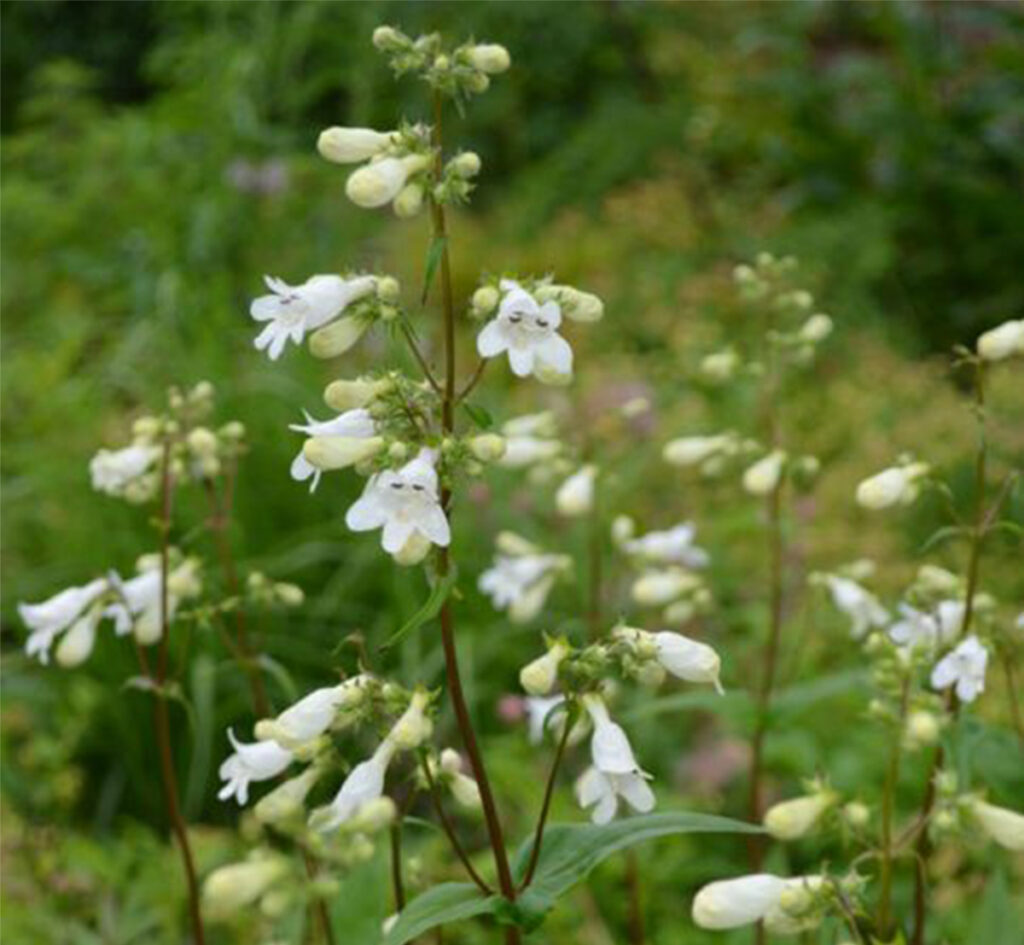
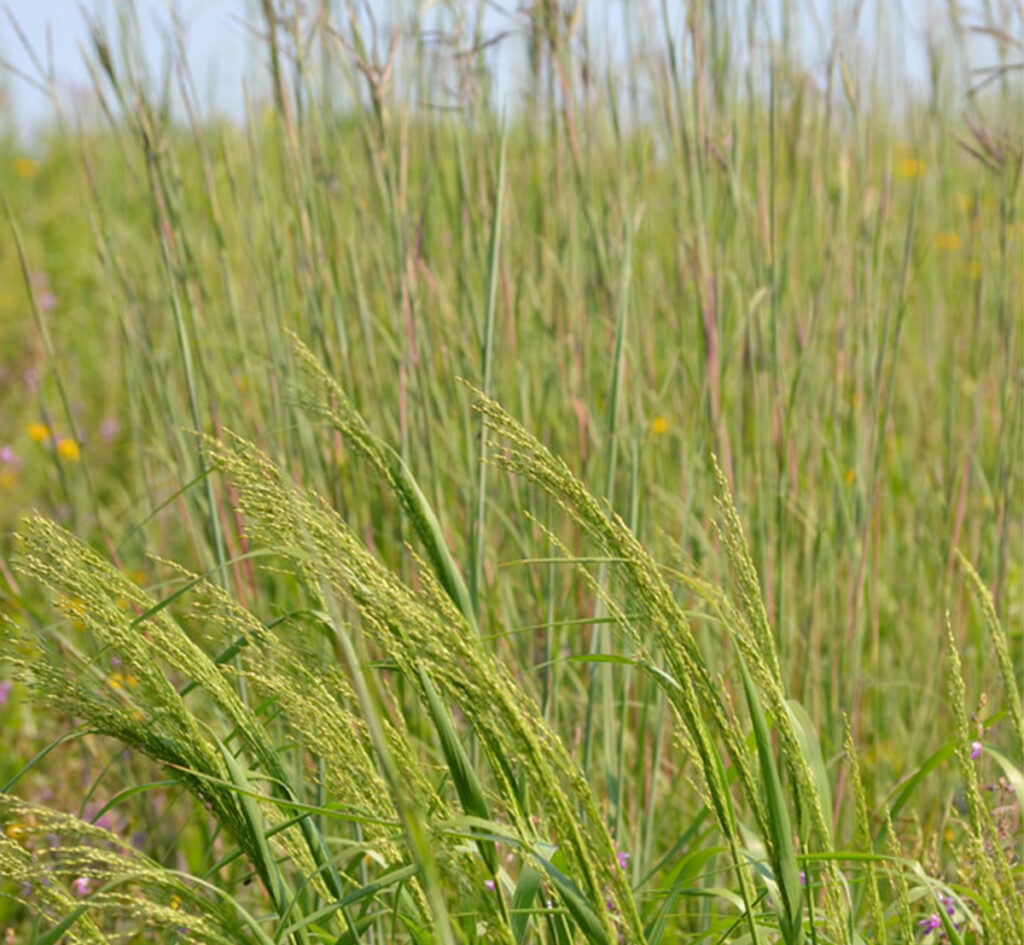
Switch grass (Panicum virgatum) is a favorite of birds, which love to eat the seeds. It is also a larval host plant for most banded skipper and satyr butterflies. Photo courtesy of Prairie Moon.
David Godshall, principal and co-founder of Terremoto, California
“We’ve slowly come to the realization that landscaping under coast live oak trees (Quercus agrifolia) is almost a different genre of garden-making. In their native habitats, very little grows in these dry, part sun, part-shade environments. Additionally, we have to be very sparing about adding irrigation to these trees, as they don’t like summer water! Luckily for us, Island Alumroot (Heuchera maxima) co-evolved to fill this very particular botanical niche, and we’ve had great success using them as drought tolerant, partial shade loving groundcover to make oak woodlands feel a bit more cultivated or purposeful. They push beautiful pink to white flowers in spring to boot.”
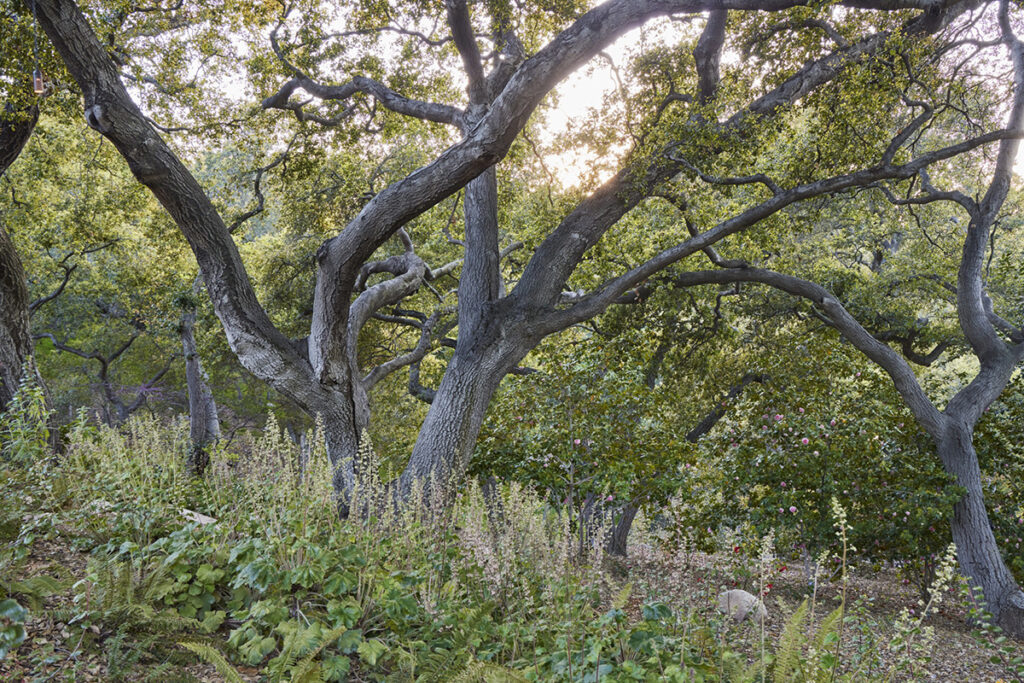
Jeff Lynch, Director of Horticulture at Wethersfield Estate & Garden, New York
“Golden ragwort (Packera aurea) and Jacob’s ladder (Polemonium reptans) is a great combo to use in partial shade to shaded areas where you want a lot of ground covered. Both plants spread in a nice way to cover a lot of real estate. They bloom at the same time: Golden ragwort in yellow, and Jacob’s ladder in beautiful blue, which look spectacular together. These plants will fill in eventually to form a solid ground cover and will do a good job of keeping weeds out.”
This pale blue bloomer reaches a foot in height, is deer resistant, and is loved by native bumble bees. Photo courtesy of Prairie Moon.
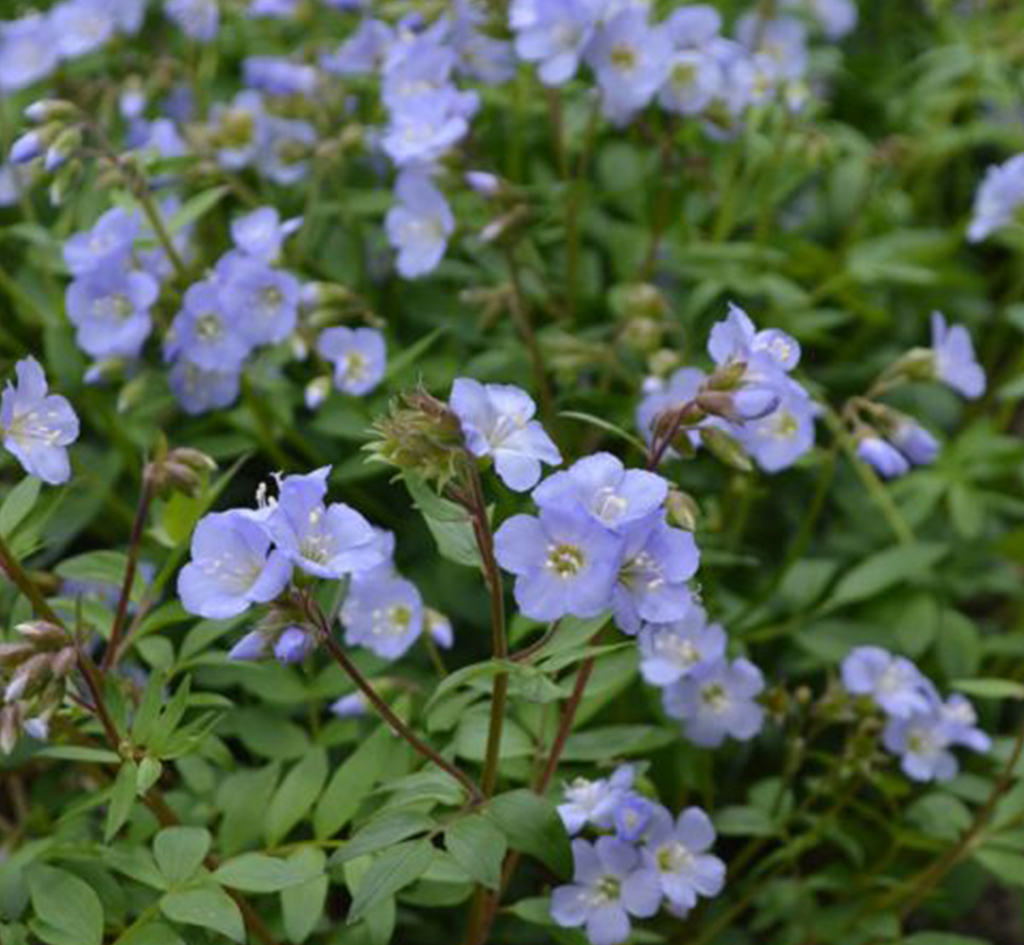
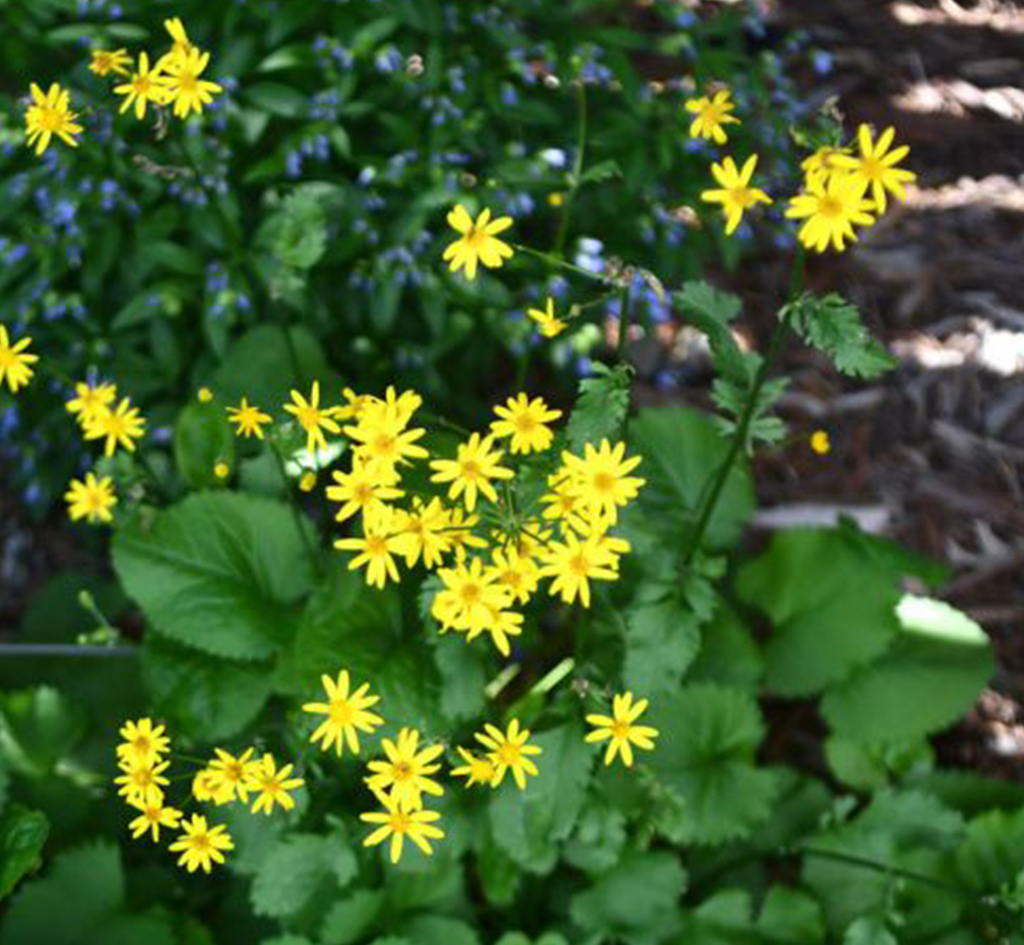
Producing yellow flowers in early spring, golden ragwort attracts small native bees. Photo courtesy of Prairie Moon.
Toshi Yano, Director of Perfect Earth Project, New York
“In shady spots, one of my favorite combos for spring is woodland phlox (Phlox divaricata) and foamflower (Tiarella cordifolia). If you want to extend the flowering through the season, try adding spotted geranium (Geranium maculatum), and heart-leaved aster (Symphyotrichum cordifolium). You can also add foliar interest with ferns and sedges.”
Spring at Mt. Cuba Center in Delaware showcases an understory of woodland phlox, foamflower, and eastern columbine. Photo by Toshi Yano.
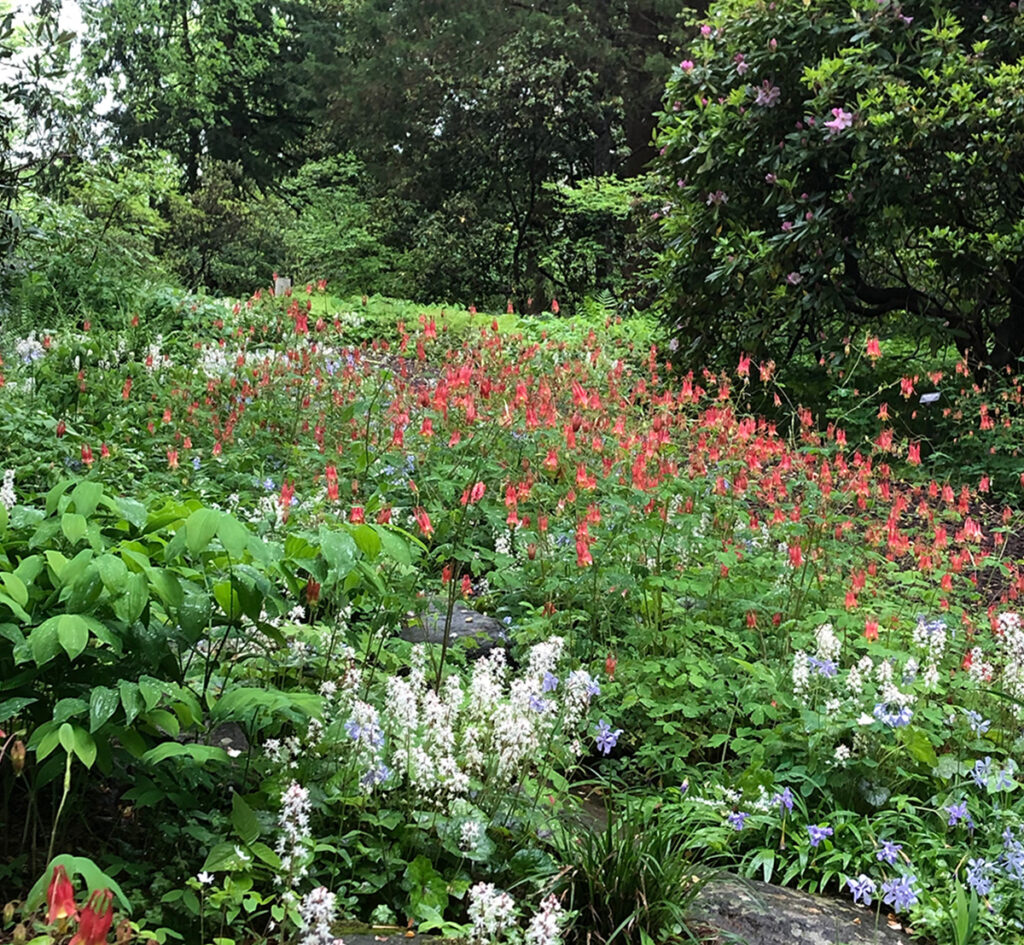
Kelly D. Norris, Plantsman, Kelly D. Norris, LLC /Three Oaks Garden, Iowa
“It’s hard to pick a favorite—every place offers an opportunity to discover its signature vegetation. Here on the historic tallgrass prairie, I love encountering Louisiana sage(Artemisia ludoviciana) with associates like pale purple coneflower (Echinacea pallida), butterfly weed (Asclepias tuberosa), and Coreopsis palmata.”
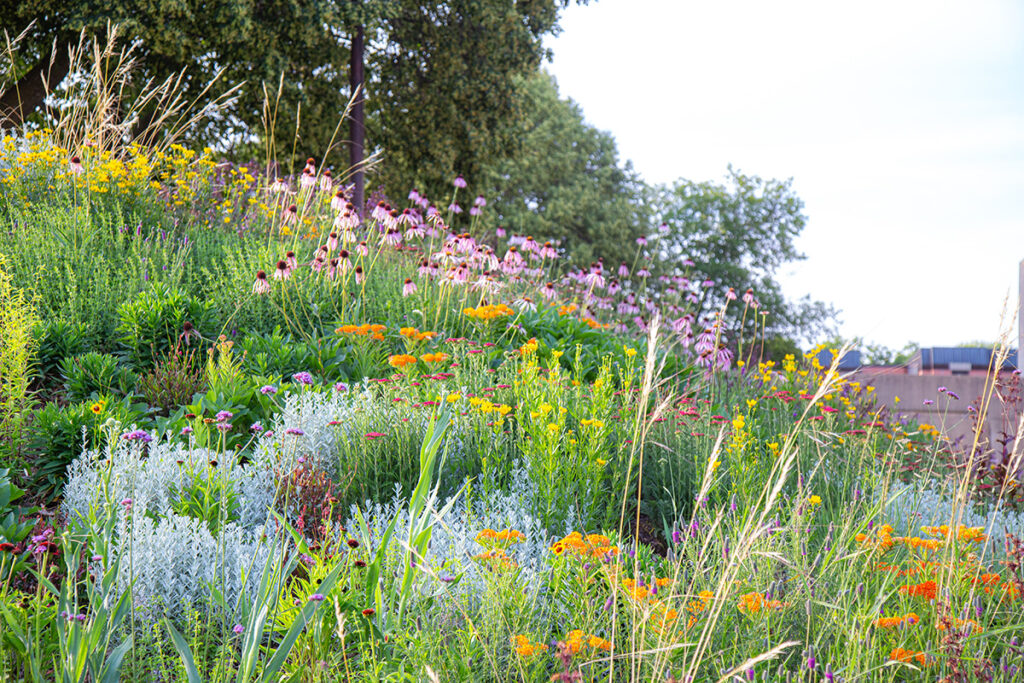
“I try to capture that excitement of silver, a feeling of something unexpected, in my plantings. Generalist, adaptable plants like Louisana sage (Artemisia ludoviciana) are often misunderstood, perceived as aggressive or worse yet ‘invasive’ because of their competitive tendencies. While not for every garden, they offer solutions for establishing vegetation on stressful sites. Heavy soils can regulate this competitive profile.”
Maggie Tsang + Isaac Stein, PLA, ASLA, principals and co-founders of Texas-based Dept. Landscape Architecture and Urban Design
“A mix of Sand Live Oak (Quercus geminata), Sabal Palm (Sabal Palmetto), Saw Palmetto (Serenoa repens), Southern Shield Fern (Dryopteris ludoviciana), Rusty Lyonia (Lyonia ferruginea), and False Rosemary (Conradina canescens) draws on the coastal scrub of northern Florida. Together, they are rich in texture and represent many shades of green—from the silvery hue of the saw palmetto to the bright fronds of the shield fern to the dark cupped leaves of the sand live oak. This diversity also provides mid-story and canopy habitat and ample food sources. They work well in sandy soils with minimal water use.”
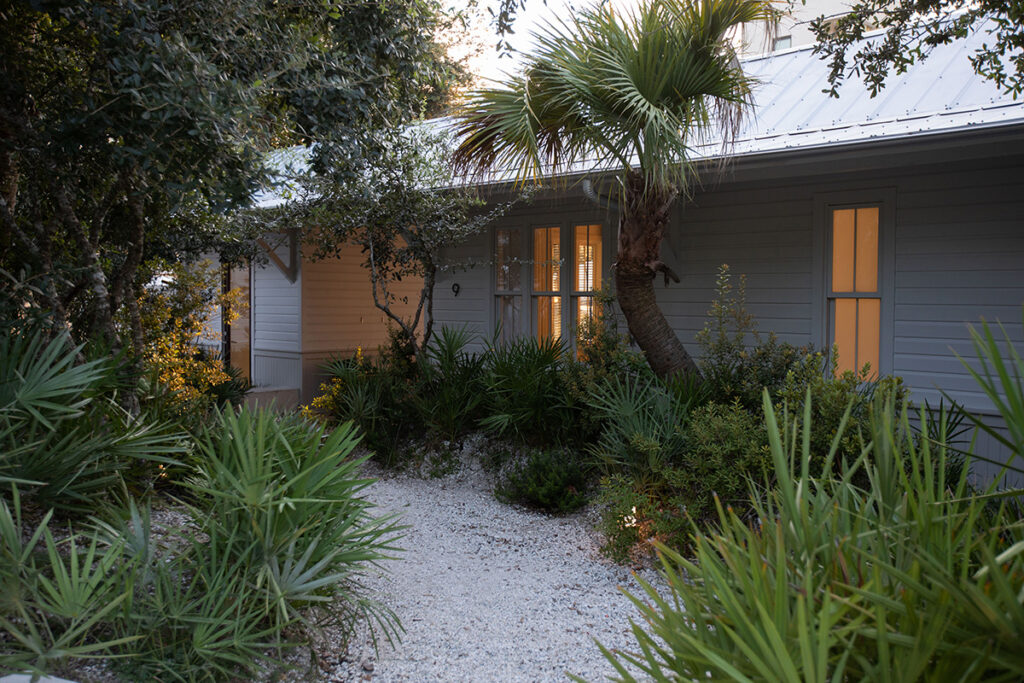
Jen Toy, Director of California nonprofit Test Plot
“It’s hard to choose just one combination, so I’m sharing two. I spent 15 years living on the east coast, so I have a deep nostalgia for fall colors. In the garden, I love watching the lime green, heart-shaped leaves of Western redbud (Cercis occidentalis) crinkle to a yellow-brown and blanket a carpet of blue-gray Wild rye (Leymus condensatus ‘Canyon Prince’). This is a time the garden is quiet and settling in for winter rains.”
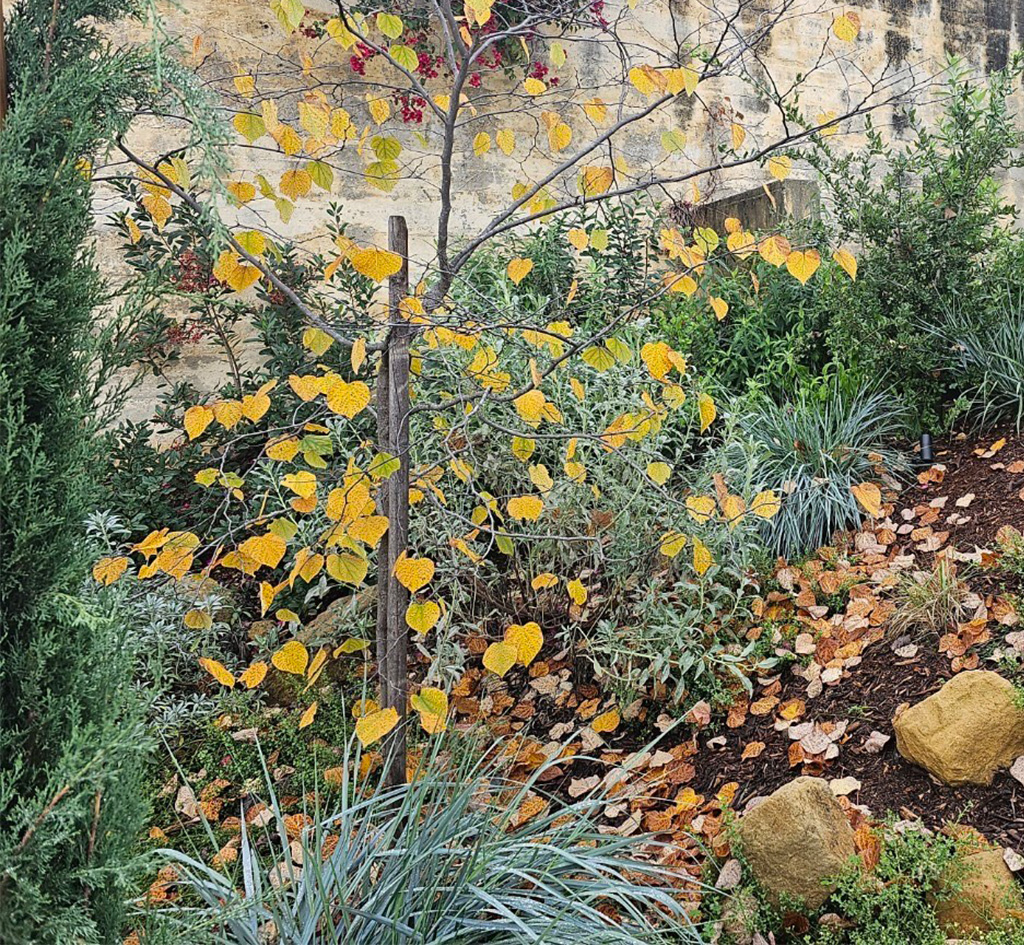
Fall leaves of the Western redbud tree with ‘Canyon Prince’ wild rye. Photo by Jenny Jones.
“Another favorite combination is Bladderpod (Peritoma arborea) mixed with any of the Southern California sages (Salvia apiana, S. mellifera, S. spathacea). Bladderpod, which is not a great name for a fantastic plant, has evergreen silvery foliage, bright yellow flower clusters, and these really cool inflated fruit capsules that hold the seeds. It smells like onions and peppers. Nothing reminds me more of Los Angeles than opening my car door and brushing past all the fragrant natives planted in our median.”
Yellow-blooming bladderpod accompanies the flower stalks of white sage (Salvia apiana). Photo by Jen Toy.
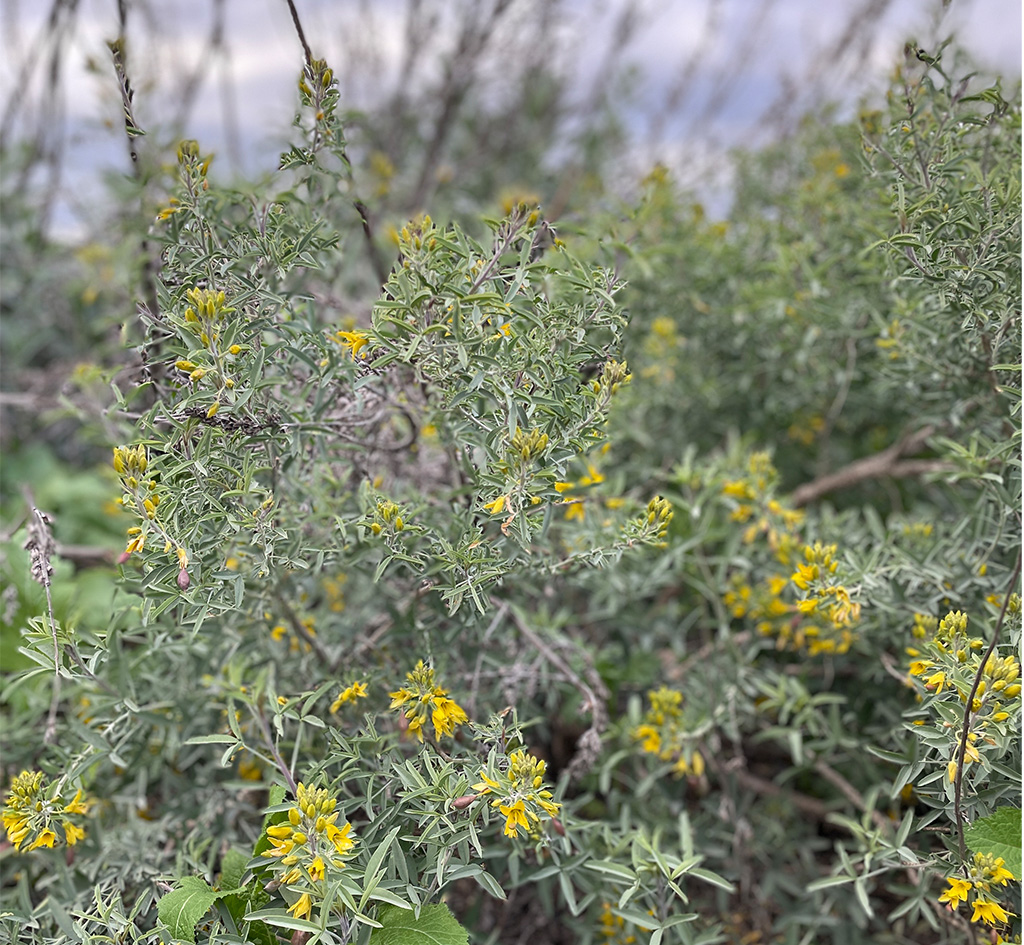
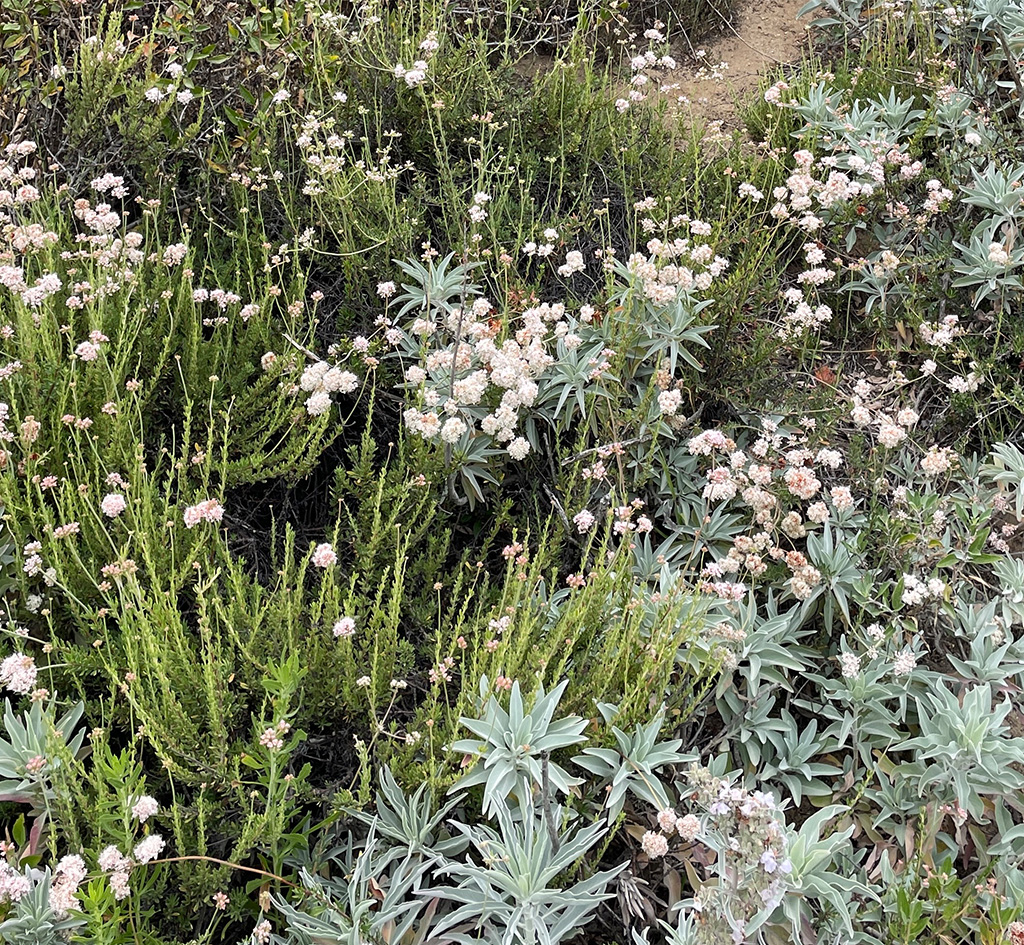
Toy also loves combining white sage (Salvia apiana) with buckwheat, as shown here. Photo by Jen Toy.
Sefra Alexandra, aka The Seed Huntress and Directress of The Ecotype Project, Connecticut
For areas with wet feet, Alexandra recommends a combination of blue vervain, swamp milkweed, and blue lobelia. “Blue vervain (Verbena hastata) blooms July to September and supports specialist bees. It is also a great medicinal plant for humans: anti-inflammatory, antibacterial, antispasmodic, and analgesic (pain-relieving), even utilized for relieving anxiety. Songbirds love to eat the seeds. Swamp milkweed (Asclepias incarnata) blooms June-September. It’s a larval host, attracts beneficial insects, and provides important nesting sites. And Blue lobelia (Lobelia siphilitica) is a great mid-summer stunner that supports a variety of butterflies, bees, and hummingbirds.”
Swamp Milkweed. Photograph courtesy of Wild Seed Project.

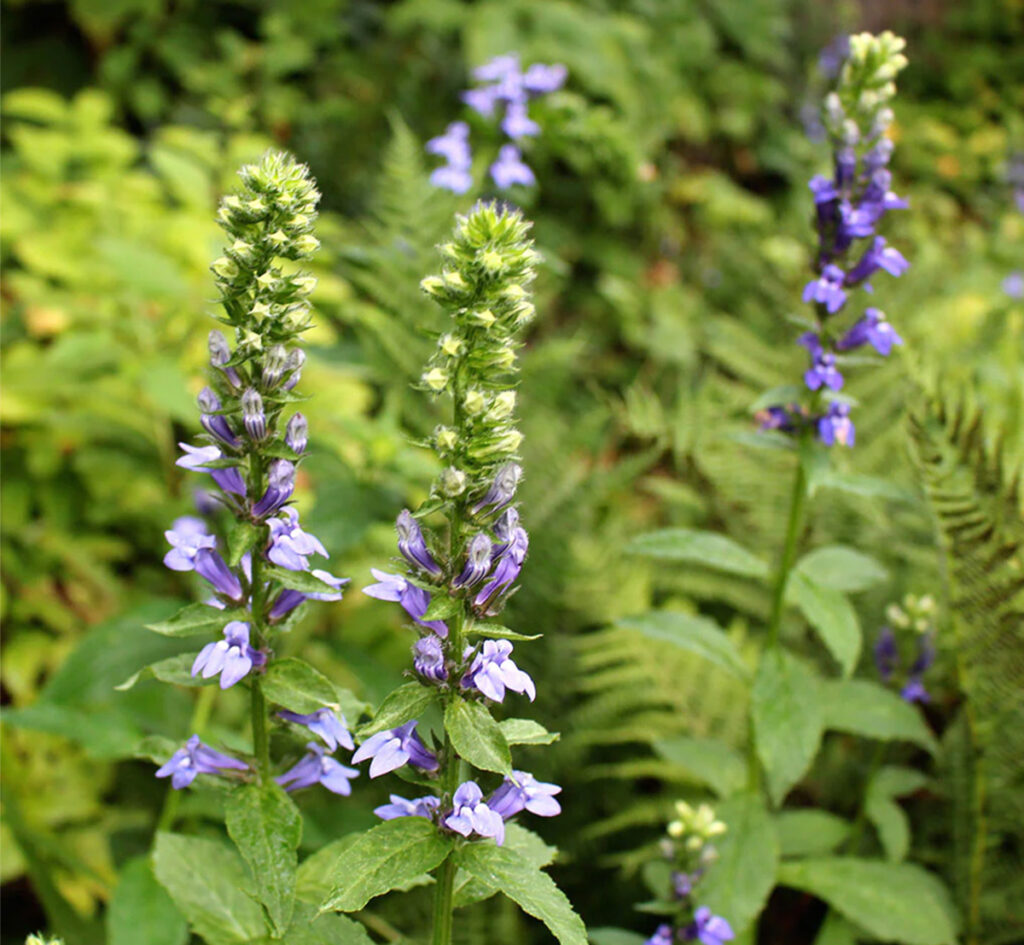
Blue Lobelia. Photograph courtesy of Wild Seed Project.
Blue Vervain. Photograph courtesy of Wild Seed Project.

by Melissa Ozawa
This is part of a series with Gardenista, which ran on April 4, 2024.
